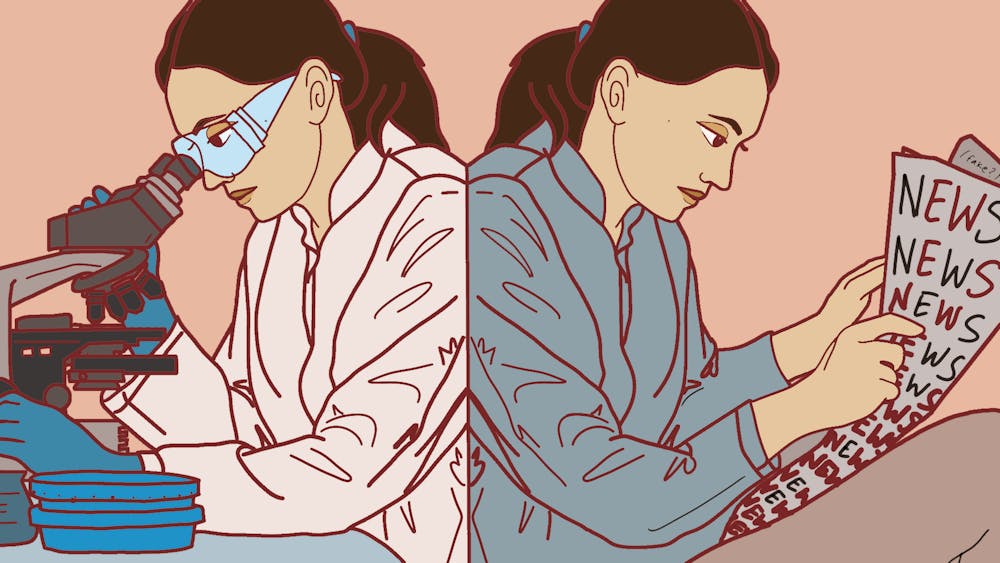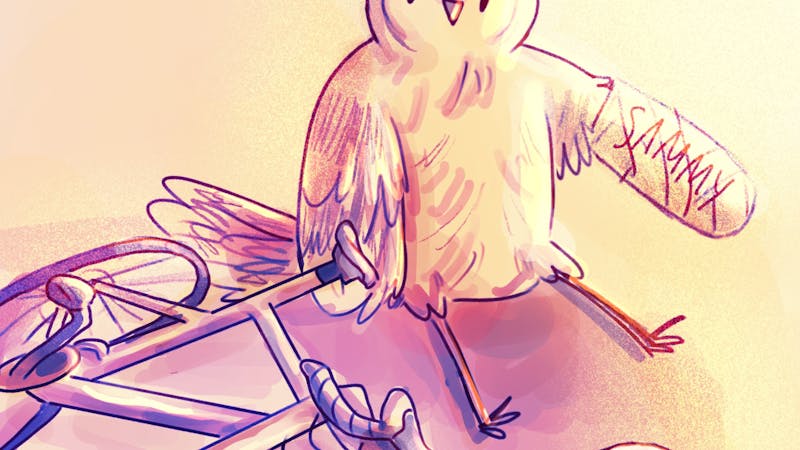Rice researchers talk media bias, nuance

Sifting through the cacophonous jumble of information available at the tap of a screen can be a daunting task. Modern online socialization means the news we receive is never-ending, multifaceted and sometimes dangerous. What are the implications of the rampant accusations of biased journalism and misinformation in today’s academic climate? Researchers at Rice have some ideas.
Dominic Boyer is a professor of anthropology at Rice and helped found the Center for Environmental Studies. In researching for his book, “The Life Informatic: Newsmaking in the Digital Era,” which was published in 2013, Boyer was able to observe firsthand the overhaul of traditional news media in response to the rise of the internet and social media.
“When I was conducting research in the Associated Press office in Frankfurt, Germany in the 1990s, I was amazed by how fast news flows, how many really important decisions about newsworthiness had to be made in just seconds,” Boyer said. “[My] focus was how digital information technologies impacted news … With the internet, we had a shift away from these broadcast patterns toward a much more decentralized, peer-to-peer messaging system.”
Boyer characterized the media transformation as having both extremely positive and negative implications.
“The internet activated a lot of people’s sense of engagement … people who felt cut out of the production and dissemination of information now could actually become very active in it,” Boyer said. “The problem is a real crisis of authority and truth was created.”
Boyer outlined the heightened susceptibility of media outlets to hoaxes or false news events, largely brought about by the constant internet news cycle. To keep up, some journalists turned to objectionable practices such as imitating neighboring news organizations’ content.
Boyer said he sees these impacts in the climate research he conducts today. The oil and gas industry is a particular source of misinformation, Boyer said, especially as it relates to climate change.
This phenomenon of media-based misinformation influencing scientific topics is not exclusive to climate change, though. Brenton Kalinowski, a graduate student in the sociology department, also encountered media influence and misinformation in his recent research examining the response of Houston’s religious leaders to the COVID-19 pandemic.
Kalinowski said that several religious leaders he interviewed reported pushback from their congregations against restrictions such as masking or social distancing, which these leaders attributed to media polarization and downplaying of the public health crisis.
“When individual congregants heard misinformation in the media and in turn impacted the congregation … [religious leaders] had to loosen a lot of their protocols because they can’t afford to lose members and funding.” Kalinowski said. “That had a dangerous implication.”
He also noted a mounting tension between scientific research and media polarization as a whole. When it comes to scientific topics in contemporary public discourse, Kalinowski said that taking a particular stance can lead to assumptions about a scientist’s personal morals or political beliefs, a phenomenon that often deters such academics from speaking on controversial topics.
“Scientists feel less comfortable wanting to correct misinformation, because the political climate is very volatile,” Kalinowski said.
Intimately familiar with this volatile political media climate is Matthew Tyler, an assistant professor in Rice’s political science department. Tyler’s latest research topics include partisan political violence and the magnitude of polarization in online news consumption. He said that in political science, media misinformation is a relatively new research focus, with complex implications.
“The rise of misinformation has often been cited as an explanation for rising polarization in other areas of politics,” Tyler stated. “The [academic] picture on misinformation has become a lot more nuanced. It’s now clearer that the misinformation … specifically on social media, is really concentrated on one side of the political spectrum.”
Tyler also said that research constraints make it difficult to identify causal relationships between media misinformation and political behaviors. However, he made note of a theory in his line of work that political violence may be exacerbated by such misleading content.
“Pundits … have argued that misinformation will cause partisans to become more accepting of using political violence,” Tyler said. “The idea is, some misinformation reaches someone … and inspires them to believe things that aren’t true, and that inspires them to act in a violent way.”
Reflecting on journalism as a whole, Tyler acknowledges that although the state of media consumption is becoming increasingly disjointed, the actual quantity of misinformation being published is often exaggerated.
He distinguished between the posting of deliberately misleading content and journalism that may favor one perspective over others, citing the latter as a potential contributor to more polarization.
“Now the media market is so fragmented, it’s so easy for someone to seek out a source that diverges on what they emphasize,” Tyler said. “It’s much easier to think about how different media outlets can affect people differently than 4o years ago … I don’t think we’ve stabilized yet.”
Kalinowski’s biggest concern looking forward is journalistic credibility, especially in the context of pressing scientific issues.
“The aspect of trust, when it comes to misinformation, is very important … getting points across in a way that encourages people to make the best decisions for themselves and their communities,” Kalinowski said.
Boyer also expressed that journalism has room to improve in the age of the internet and social media.
“We just have fewer people out there actually generating new credible information across the world, and that’s a problem for our public awareness,” Boyer said. “I hope we can keep finding ways to circulate information while also being inclusive.”
More from The Rice Thresher

New student center to ‘complete’ central quad
Breezeways, arches and outdoor seating will abound at the Moody Center Complex for Student Life set to break ground May 8. The 75,000-square-foot complex was designed by architecture firm Olson Kundig and has an expected completion date of fall 2027.

Best study snacks to fuel your finals
Finals are creeping up on us, and that means hunting season for the best study snacks on and off campus. Below are some that are sure to see you through the most enigmatic paper prompts and puzzling practice questions.

Head over handlebars: a brief history of Beer Bike accidents
In the first heat of the women’s race in this year’s Beer Bike, Melissa Geng said she was biking faster than she ever had, adrenaline pumping through her veins. All was going well, until she crashed into the fence of the alumni viewing area at the turn of her second lap.

Please note All comments are eligible for publication by The Rice Thresher.